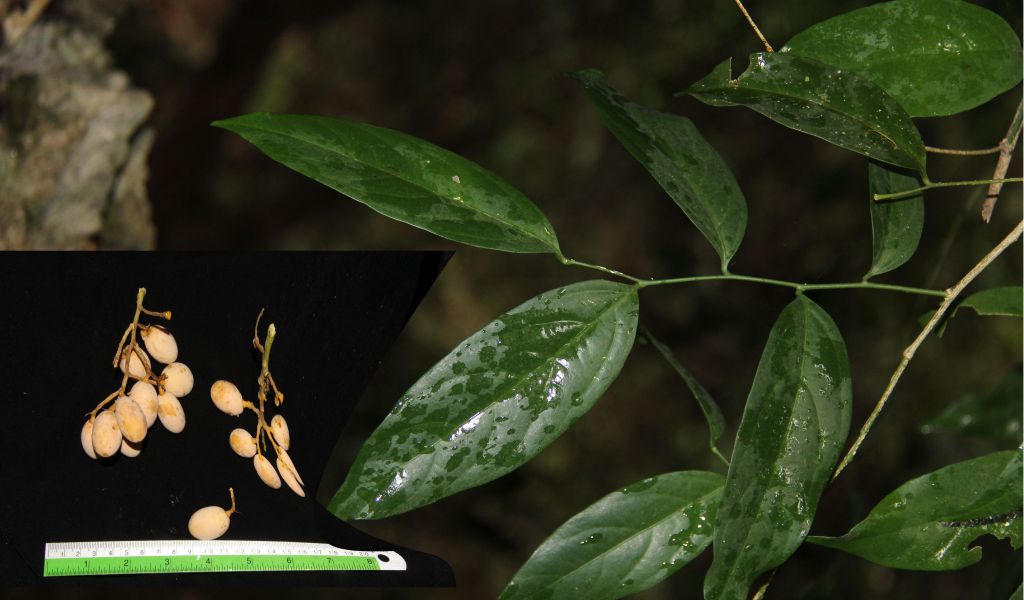ຜັກຫວານ / Pak Wan
APA 6th ed. ຜັກຫວານປ່າ / Melientha. (2020, May 27). Retrieved from https://www.phakhaolao.la/kb/0000019
MLA 8th ed. ຜັກຫວານປ່າ / Melientha. Pha Khao Lao, 27 May 2020, https://www.phakhaolao.la/kb/0000019.
Chicago 17th ed. Pha Khao Lao. 2020. "ຜັກຫວານປ່າ / Melientha." Published May 27, 2020. https://www.phakhaolao.la/kb/0000019.

Melientha suavis subsp. suavis
van khok
Phak van comes from a deciduous tree, up to 13 m tall, with a cylindrical crown and drooping branches. The leaves are hard fleshy and egg-shaped, 4 cm-16 cm x 2.5 cm-7 cm. Inflorescences are a cluster of four to five flowers that are 15 cm-20 cm long and grow at irregular intervals on swellings of the main trunk, on branches or in axils of leaves. The 1.5 mm greenish flowers are fragrant. The yellow-green fleshy oval fruit hangs in bundles, measures 2.3 cm-4 cm x 1.5 cm-2 cm, and has one seed. Two types of phak van are distinguished as these come from different forest types: phak van khok grows in dry dipterocarp forest and phak van dong in evergreen forest. Phak van dong looks similar to Urobotrya siamensis Hiepko, which has poisonous leaves but is distinguished by its red 1 cm-long fruit. Other phak van species occur in Laos but are from various families, such as phak wan ban () which is often planted in home gardens.
Phak van is used as a forest vegetable, its shoots, inflorescences and young fruit
cooked in a fish or rattan curry or jeo. The ripe fruit is also edible. Leaves are used to treat sore throats in children and the roots are sometimes used to treat fever.
